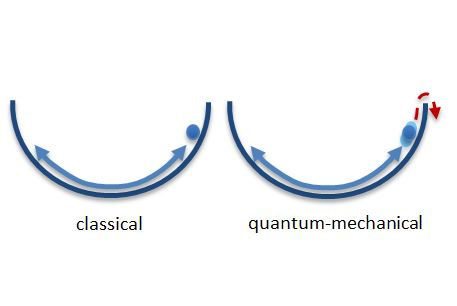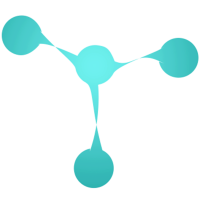
Reinforcement deep learning is a subfield of machine learning that combines the principles of deep learning and reinforcement learning. This subfield studies how a computational agent learns from trial and error. In other words, reinforcement deeplearning aims to train machines to make their own decisions. Robot control is one of its many uses. This article will look at several examples of this research method. We will discuss DM-Lab and the Way Off-Policy algorithm.
DM-Lab
DM-Lab, a Python library and task suite for studying reinforcement learning agents, is a software package. This package is used by researchers to build new models of agent behavior as well as automate the evaluation and analysis of benchmarks. This software is designed to allow reproducible and accessible research. This software includes task suites that allow you to implement deep reinforcement learning algorithms in an articulated-body simulation. Visit DM-Lab to find out more.

The combination of Deep Learning, Reinforcement Learning and reinforcement learning has made remarkable progress on a wide range of tasks. Importance-weighted actor learner architecture (IMPALA), achieved a median human normised score of 59.7% for 57 Atari games and 49.4% for 30 DeepMind Lab level levels. The results are impressive and show the potential of AI development, even though it's a bit too early to compare these two methods.
Way Off-Policy algorithm
The terminal value function of previous policies is used by A Way Off-Policy reinforcement deep-learning algorithm to improve on-policy performance. This improves sample efficiency by using older samples from the agent's experience. This algorithm was tested in many experiments. It is comparable to MBPO when it comes to manipulation tasks as well as MuJoCo locomotion. The efficiency of the algorithm has been also tested against model-free or model-based methods.
The off-policy framework has two main characteristics. It can be flexible enough for future tasks and cost-effective in reinforcement learning scenarios. Not only must off-policy methods work on reward tasks but also stochastic ones. We should explore other methods for these tasks in the future, such as reinforcement learning to self-driving cars.
Way Off-Policy
It is useful to evaluate processes using off-policy frames. But they do have their limitations. After some exploration, it becomes difficult to learn off-policy. The algorithm's assumptions can be biased, since a new agent with old experiences may behave differently to a newly trained one. These methods aren't limited to reward tasks. They can also be used for stochastic tasks.

The on-policy reinforcement Learning algorithm typically evaluates the exact same policy and improves it. It will perform the same action if the Target Policy equals or exceeds the Behavior Policy. It can also do nothing if it is not based on any previous policies. Off-policy Learning is therefore more suitable for offline learning. Both policies are used by the algorithms. For deep learning, which method is more effective?
FAQ
What is the newest AI invention?
The latest AI invention is called "Deep Learning." Deep learning is an artificial intelligent technique that uses neural networking (a type if machine learning) to perform tasks like speech recognition, image recognition and translation as well as natural language processing. Google created it in 2012.
Google is the most recent to apply deep learning in creating a computer program that could create its own code. This was done with "Google Brain", a neural system that was trained using massive amounts of data taken from YouTube videos.
This allowed the system's ability to write programs by itself.
IBM announced in 2015 the creation of a computer program which could create music. Music creation is also performed using neural networks. These are called "neural network for music" (NN-FM).
Who invented AI and why?
Alan Turing
Turing was created in 1912. His father was a clergyman, and his mother was a nurse. At school, he excelled at mathematics but became depressed after being rejected by Cambridge University. He started playing chess and won numerous tournaments. He worked as a codebreaker in Britain's Bletchley Park, where he cracked German codes.
He died in 1954.
John McCarthy
McCarthy was born in 1928. McCarthy studied math at Princeton University before joining MIT. The LISP programming language was developed there. He had laid the foundations to modern AI by 1957.
He died in 2011.
AI: Is it good or evil?
AI is seen in both a positive and a negative light. On the positive side, it allows us to do things faster than ever before. No longer do we need to spend hours programming programs to perform tasks such word processing and spreadsheets. Instead, our computers can do these tasks for us.
On the negative side, people fear that AI will replace humans. Many believe that robots may eventually surpass their creators' intelligence. This means that they may start taking over jobs.
What is AI good for?
AI has two main uses:
* Prediction-AI systems can forecast future events. AI can help a self-driving automobile identify traffic lights so it can stop at the red ones.
* Decision making – AI systems can make decisions on our behalf. Your phone can recognise faces and suggest friends to call.
Statistics
- More than 70 percent of users claim they book trips on their phones, review travel tips, and research local landmarks and restaurants. (builtin.com)
- While all of it is still what seems like a far way off, the future of this technology presents a Catch-22, able to solve the world's problems and likely to power all the A.I. systems on earth, but also incredibly dangerous in the wrong hands. (forbes.com)
- Additionally, keeping in mind the current crisis, the AI is designed in a manner where it reduces the carbon footprint by 20-40%. (analyticsinsight.net)
- In the first half of 2017, the company discovered and banned 300,000 terrorist-linked accounts, 95 percent of which were found by non-human, artificially intelligent machines. (builtin.com)
- A 2021 Pew Research survey revealed that 37 percent of respondents who are more concerned than excited about AI had concerns including job loss, privacy, and AI's potential to “surpass human skills.” (builtin.com)
External Links
How To
How to set Google Home up
Google Home, an artificial intelligence powered digital assistant, can be used to answer questions and perform other tasks. It uses sophisticated algorithms and natural language processing to answer your questions and perform tasks such as controlling smart home devices, playing music, making phone calls, and providing information about local places and things. With Google Assistant, you can do everything from search the web to set timers to create reminders and then have those reminders sent right to your phone.
Google Home can be integrated seamlessly with Android phones. An iPhone or iPad can be connected to a Google Home via WiFi. This allows you to access features like Apple Pay and Siri Shortcuts. Third-party apps can also be used with Google Home.
Google Home has many useful features, just like any other Google product. Google Home will remember what you say and learn your routines. It doesn't need to be told how to change the temperature, turn on lights, or play music when you wake up. Instead, you can just say "Hey Google", and tell it what you want done.
These steps will help you set up Google Home.
-
Turn on Google Home.
-
Press and hold the Action button on top of your Google Home.
-
The Setup Wizard appears.
-
Select Continue
-
Enter your email address.
-
Click on Sign in
-
Google Home is now online